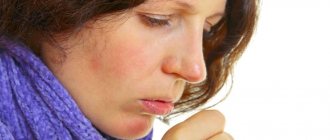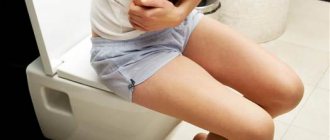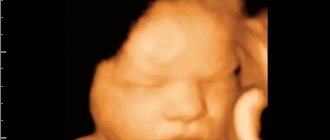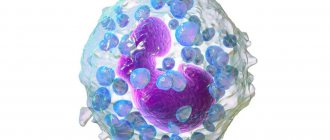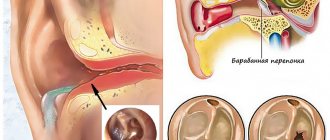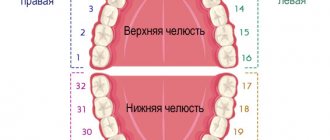Number of bowel movements
For an adult, normal stool is considered without prolonged strong straining once every 1-2 days or 2 times a day. After the process of defecation, there is a feeling of comfort and complete emptying of the intestines, and the urge completely disappears. Some external circumstances - bed rest, a change in familiar surroundings, the need to use a vessel, being in the company of strangers - can slow down or increase the frequency of this process.
A deviation from the norm is the absence of bowel movements for 3 days (constipation) or very frequent bowel movements - up to 5 times a day or more (diarrhea).
Up to contents
Daily amount of feces
With a mixed diet, the daily amount of feces can vary widely. The average is about 150-400 g. Note that when consuming predominantly plant foods, the amount of feces may increase, while animal feces may decrease.
A significant increase or decrease in fecal mass is a kind of alarm signal. The main causes of polyfecality (increased amount of feces) include:
- eating a lot of fiber;
- stomach diseases accompanied by impaired protein digestion;
- intestinal diseases accompanied by impaired absorption of food, water and increased peristalsis, as well as secretion of inflammatory exudate and mucus into the intestinal lumen (enteritis, polyps);
- disease of the liver, gastric bladder and biliary tract, leading to impaired bile secretion and absorption in the colon;
- disease of the pancreas with insufficiency of its exocrine function (insufficient digestion of proteins and fats);
- eating a lot of fiber.
The main reasons for a decrease in the amount of feces include:
- the predominance of easily digestible foods in the diet;
- reducing the amount of food eaten;
- the presence of constipation, in which, due to prolonged retention of feces in the large intestine and maximum absorption of water, the volume of feces decreases.
Up to contents
Stool color
With a mixed diet, the stool is brown.
A dark brown tint of stool may indicate the presence of disturbances in the digestion of food in the stomach, colitis, putrefactive dyspepsia. This color also predominates with constipation and following a meat diet.
Light brown is observed with increased intestinal motility and following a dairy-vegetable diet.
Orange is observed when consuming beta-carotene and foods high in it (for example, pumpkin, carrots, etc.).
A reddish color occurs when bleeding from the lower intestines (with anal fissures, hemorrhoids, ulcerative colitis, etc.), as well as when eating beets.
The green color is observed when eating a large amount of sorrel, spinach, lettuce, with increased intestinal motility or the presence of dysbacteriosis.
Light yellow stool indicates very rapid passage of feces through the intestines.
Black color - with bleeding from the upper gastrointestinal tract (cirrhosis, peptic ulcer, colon cancer), ingestion of blood during pulmonary or nasal bleeding, when taking activated charcoal and bismuth preparations, eating blueberries, currants.
Greenish-black stool may occur when taking iron supplements.
Grayish-white stool indicates that very little or no bile enters the intestines (acute pancreatitis, blockage of the bile duct, cirrhosis of the liver, hepatitis, etc.).
Up to contents
Types of analyzes
Most often, the child is prescribed the following types of stool examination:
1. Analysis of feces for worm eggs and Giardia . During these studies, eggs of protozoa and helminths are identified that infect the child’s lower intestines. According to the test results, flatworms (cat fluke, liver fluke, echinococcus, bovine and pork tapeworm), roundworms (pinworms, roundworms, hookworms), and protozoan parasites (giardia) can be detected in the feces. To obtain reliable results, you need to examine fresh feces taken no later than three hours ago.
2. Analysis of the child’s stool for enterobiasis . Allows you to diagnose pinworm (worm) infection. These worms lay eggs on the outside of the anus. Clinically, the disease manifests itself as intestinal disorders and itching in the anal area. Collection of material for research is carried out in the morning, before urination and defecation. The child is not washed before this.
Where can a child's stool be tested? At home, you need to take a special cotton swab soaked in glycerin and carefully scrape the perianal folds, then place the taken biomaterial in a container. If the analysis is done in a laboratory setting, the biomaterial is collected by a nurse. The procedure is absolutely painless and does not cause any discomfort to children.
3. Analysis of stool for dysbacteriosis . Prescribed to study the composition of intestinal microflora. Based on the results of the analysis, the doctor assesses the ratio of beneficial microflora, pathogenic and opportunistic microorganisms.
4. Coprogram . A general analysis of the child’s stool (coprogram) is carried out to assess the functioning of the digestive organs, as well as to identify inflammatory processes.
5. Analysis for carbohydrates . This stool test is prescribed for a child to diagnose acquired or congenital lactase deficiency.
6. Occult blood test . Prescribed by a doctor to identify hidden bleeding in the digestive organs.
Consistency (density) of stool
Normally, the stool is soft and formed. Feces should consist of 70% water, 30% from the remains of processed food, exfoliated intestinal cells and dead bacteria.
The presence of pathology is indicated by liquid, foamy, ointment-like, mushy, semi-liquid, excessively dense or putty-like stool.
- Pasty stools – with increased peristalsis, inflammation or increased secretion in the intestines, may be associated with the consumption of large amounts of plant foods.
- Very dense “sheep” feces - observed with constipation and dehydration, may be a sign of a mechanical obstruction in the rectum.
- Ointment-like - observed in diseases of the pancreas, a sharp decrease in the flow of bile into the intestines, and may be associated with increased consumption of fatty foods the day before. The frequent appearance of ointment-like stool may be a symptom of pancreatic diseases and insufficient bile secretion.
- Liquid - observed when the passage of feces is accelerated, the absorption or digestion of food in the small intestine is impaired, it is a symptom of toxic infection, acute intestinal infection, poisoning.
- Foamy - observed when fermentation processes in the intestines prevail over the rest.
Up to contents
Causes
Each individual pathological component of feces has its own cause:
- Copious mucus is produced by cells in the intestinal wall in response to inflammation or damage to intestinal tissue;
- The presence of blood is possible when the integrity of the intestinal tissues in its various parts is violated;
- Pus is a product of ulcerative inflammatory processes in the area of the large intestine, the activity of pathogenic microflora (Koch's bacillus), parasites (dysenteric amoeba);
- Tissue fragments represent areas of necrosis of an oncological formation that disintegrates;
- Stones appear in response to failure of the digestive tract function, when intestinal motility is impaired, in the presence of pathology in the bile ducts;
- Parts of the body of helminths may be found in feces due to the presence of helminthic infestation in the gastrointestinal tract.
Stool smell
The smell of the stool should be fecal, unpleasant, but not pungent. Depends on the severity of fermentation and decay processes, as well as the composition of food.
When the digestive process is disrupted, undigested food begins to rot in the intestines or becomes food for pathogenic bacteria. Some of them produce hydrogen sulfide, which has a characteristic rotten odor.
Sour – for fermentative dyspepsia, which occurs due to excessive consumption of carbohydrates (flour products, sugar, peas, fruits, etc.) and fermented drinks (for example, kvass).
Fetid - indicates dysfunction of the pancreas, hypersecretion of the large intestine, and a decrease in the flow of bile into the intestines. The cause of too foul-smelling stool may be the proliferation of pathogenic bacteria.
Putrefactive – noted for constipation, colitis, disruption of the digestive process in the stomach, putrefactive dyspepsia.
Faint odor - with accelerated evacuation from the small intestine or constipation.
The smell of rancid oil is due to bacterial decomposition of fats in the intestines.
Up to contents
Extraintestinal signs
Intestinal signs are often ignored by patients. They attribute them to overwork, poisoning, eating stale food or acclimatization. Extraintestinal manifestations include:
- sudden weight loss;
- joint pain;
- severe weakness;
- loss of appetite.
There may be an unreasonable increase in temperature, allergic rashes or other skin lesions. Often serious illnesses are accompanied by psycho-emotional disorders from tearfulness and irritability to insomnia. These include bleeding gums, pain in the tongue, and a feeling of loose teeth.
If external signs are detected, it is necessary to undergo an examination.
Extraintestinal signs can come to the fore, be activated more often than intestinal ones, and appear evenly. According to the recommendations, you should sound the alarm only after two to three days of extraintestinal and intestinal manifestations. Separately, each phenomenon can be dictated by an ordinary malfunction in the body.
Bowel gases
Gases are a natural byproduct of food digestion and fermentation as it moves through the gastrointestinal tract. An adult excretes about 0.2-0.5 liters of gas per day.
Gas formation occurs during the digestion process in the stomach due to the activity of microorganisms that inhabit the intestines. They decompose nutrients, releasing hydrogen sulfide, methane, carbon dioxide and hydrogen.
A normal increase in the amount of gases is considered:
- when consumed in large quantities of carbohydrates and fiber;
- swallowing large amounts of air while drinking and eating;
- consuming foods that stimulate fermentation processes, as well as dairy products for lactose intolerance.
An increase in the amount of gases can be observed with the following pathologies.
- Intestinal dysbiosis.
- Celiac disease.
- Irritable bowel syndrome.
- Malabsorption.
- Enzyme deficiency of the pancreas.
- Chronic liver diseases: hepatitis, cholecystitis, cirrhosis.
- Chronic intestinal diseases (enteritis, colitis).
- Peptic ulcer of the stomach and duodenum, gastritis.
Up to contents
Preparation
When preparing, you must follow the following recommendations:
- temporarily refrain from introducing oils and rectal suppositories into the anus;
- exclude the use of sorbents, enzymes, laxatives;
- stop taking antibiotics a week before the test;
- three days before the test, avoid foods and medications that can change the color of stool;
- one day before the study, avoid procedures that irritate the rectum and anus (enemas, colonoscopy, sigmoidoscopy);
- after an x-ray of the digestive organs, you need to donate stool no earlier than two days later;
- When taking an occult blood test, you must stop eating fish, meat, eggs, green vegetables, magnesium, iron, and bismuth 4-5 days before the test, as this may distort the results.
